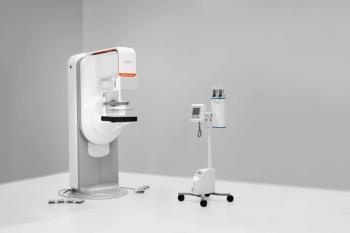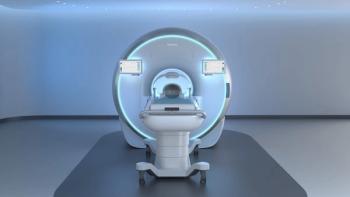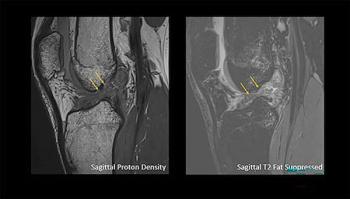
Breast CT scanner nears readiness for commercial market
A breast CT scanner dedicated to diagnostic applications could be on the market by the end of this year. The clinical test unit, unveiled today at the University of Rochester Medical Center, NY, has already scanned several patients and will soon begin a 60-patient study to compare its images with those obtained using conventional mammography systems.
A breast CT scanner dedicated to diagnostic applications could be on the market by the end of this year. The clinical test unit, unveiled today at the University of Rochester Medical Center, NY, has already scanned several patients and will soon begin a 60-patient study to compare its images with those obtained using conventional mammography systems. Cases will include normals and proven cancers. A final system design will debut at the 2006 RSNA meeting.
John H. Neugebauer, CEO of Koning Corporation, based in Rochester, believes the precedents set by CT and other modalities will allow the company to sidestep the intensive regulatory process that digital mammography systems must undergo, allowing speedy commercialization of the product.
CT is being used to visualize the whole body and specific body parts, as in the case of dedicated CTs for dental, head, and surgical applications, he said. MR has gone from general to breast-specific imaging in the case of a dedicated unit made by Aurora Imaging Technology. PET has done the same with a dedicated breast imager from Naviscan PET Systems. All have been cleared through the FDA's 510(k) process.
"We hope it goes in this direction for market clearance," Neugebauer told DI SCAN. "But it's up to the FDA, not us."
Product labeling will make a big difference. Neugebauer said the company will market the system as a diagnostic, rather than as a screening tool. This should help make the case for 510(k) clearance, he said.
A commercial system will be pricey, about $800,000. But maintenance will amount to only about half the upkeep cost for general-purpose CTs, however, as the Koning system relies on a standard mammography x-ray tube.
Koning's cone-beam CT sports a unique horizontal gantry into which a single, uncompressed breast is suspended. A 30 x 40-cm flat-panel detector rotates once around the breast as the tube pulses x-rays. (Both the tube and flat panel are being supplied by Varian Medical.) Cone-beam algorithms reconstruct the data into a volumetric image of the breast.
"The first images we have seen are exactly what we want them to be," Neugebauer said. "I can't say we hit a home run right out of the box, but we certainly got to third."
Dose will be approximately equivalent to a two-view mammogram, he said. Unlike conventional CTs, chest tissue other than the breast largely avoids x-ray exposure, thanks to the horizontal gantry.
Breast scans will be performed in 10 seconds or less. A high-resolution mode may also be available, and will require scans twice as long.
Images will be presented in 2D multislice, multiplanar, and 3D formats. A later version of the device, due for market about a year after the first, will support stereotactic biopsy. Both configurations are being designed to fit into a room no bigger than one needed to house a mammography system.
The approach taken by Koning is similar to that for breast tomosynthesis, whereby a digital mammography system takes multiple exposures across an arc of a compressed breast. Hologic, GE, and Siemens are each developing such units. Koning's system differs, however, in that it makes a full 360° turn around the breast, capturing an entire volume and creating truly isotropic voxels, which are equal in size in all planes, according to Neugebauer.
"This leads to very high spatial resolution," Neugebauer said.
Although optimized for breast imaging, the cone-beam scanner might also be used to scan extremities, including hands and feet. The FDA submission will likely include these indications, he said.
The scanner is based on research conducted by Ruolo Ning and colleagues at the University of Rochester. Ning, a professor of radiology, founded Koning on patents derived from this early work and licensed from the university. Two relate specifically to breast applications and address the apparatus and method, prone position, gantry under the table, and algorithm for reconstructing images. Others address applications in angiography and lung cancer screening.
Neugebauer expects to develop niche scanners for these other applications, although these systems are at least five years from market.
Newsletter
Stay at the forefront of radiology with the Diagnostic Imaging newsletter, delivering the latest news, clinical insights, and imaging advancements for today’s radiologists.




























